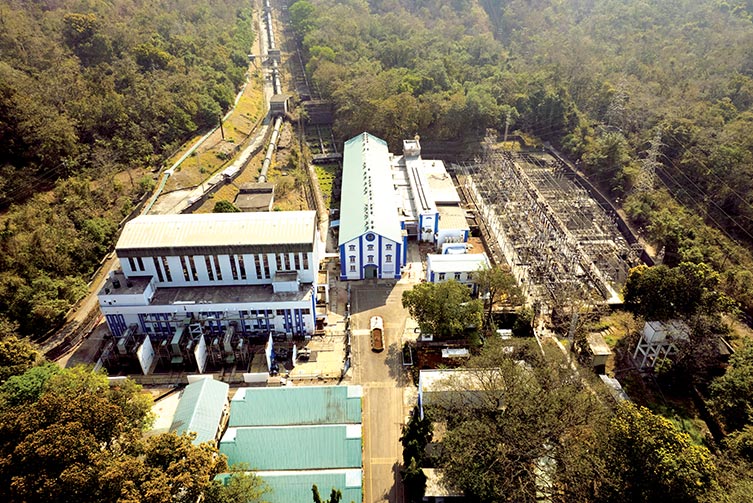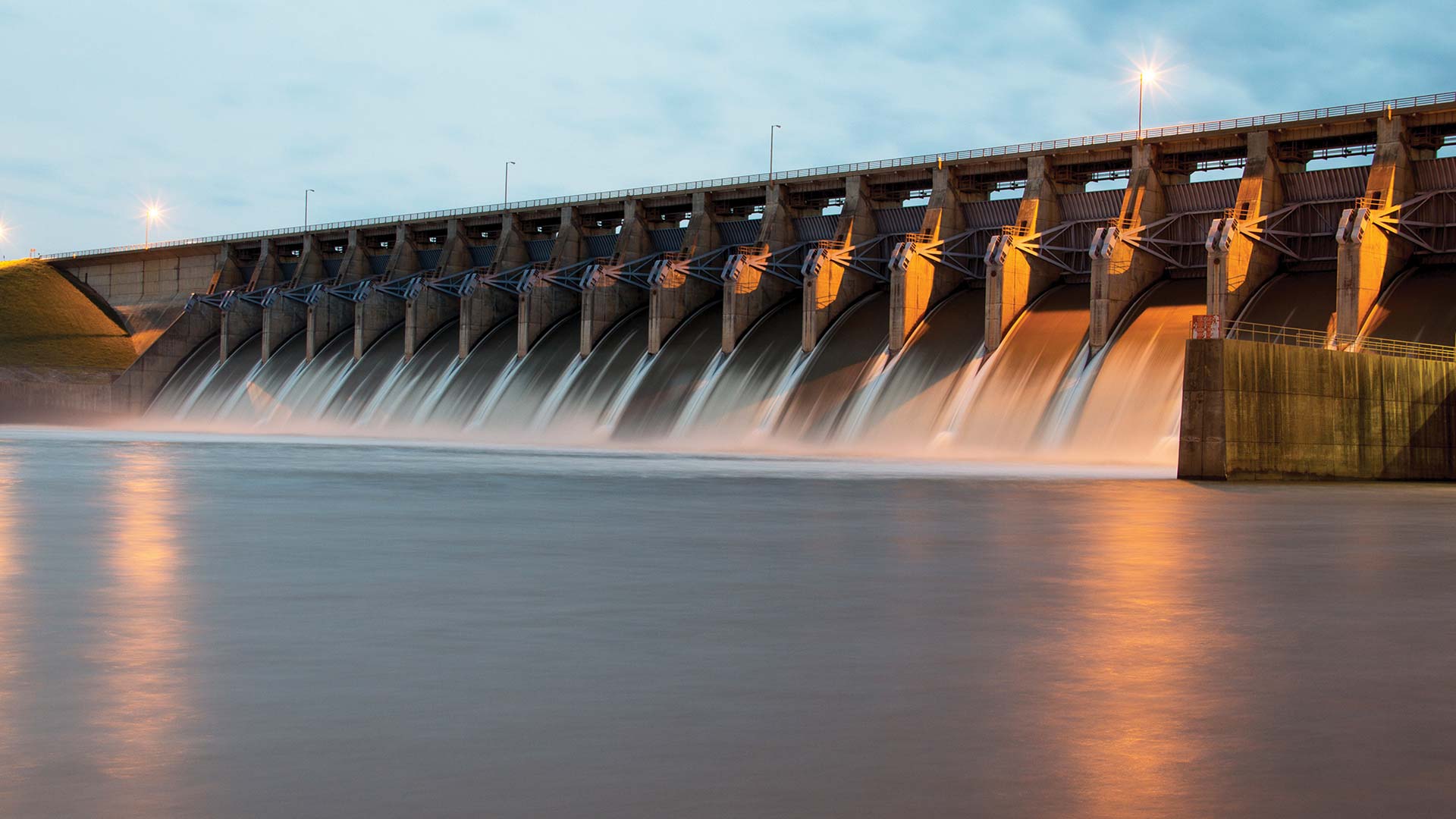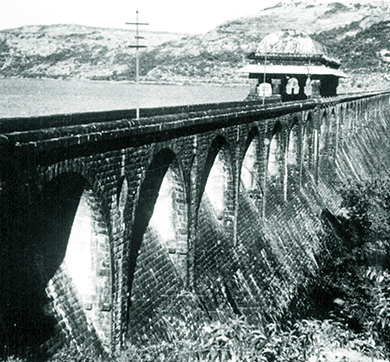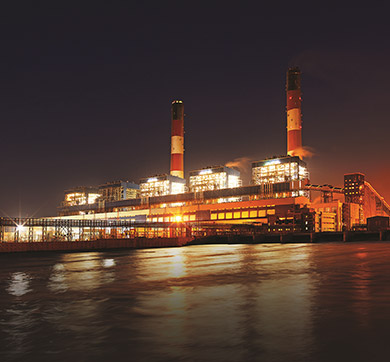July 2022 | 1540 words | 6-minute read
A century after its commissioning, the Bhivpuri hydropower station near Mumbai continues to stand tall, lifting on its shoulders the growth aspirations of a metropolis and transforming the face and fate of the surrounding region.
One of the oldest hydropower plants in India, the Bhivpuri power plant was completed in a single phase from 1916 to 1922. Nestled at the foothills of the Sahyadri hill range in the Raigad district of Maharashtra, the Bhivpuri power station consists of a dam at Thokerwadi with reservoir storage capacity of 352 million cubic meters of water. When the reservoir is full, it covers an area of 32 sq km with the catchment area spanning 124 sq km.
The plant, which started with 6 units of 8MW each, adding up to a capacity of 48MW, was later upgraded to 3 units of 24MW each amounting to 72MW. The number of penstocks were reduced from 6 to 1 feeding water to all the 3 units, with a trifurcation going to individual units.
Subsequently, Tata Power constructed a small pond on the downstream side of the main power station to collect water. This potential led to the setting up of a mini-hydropower plant with 2 units of 1.5MW each, taking the total installed capacity of Bhivpuri power station to 75MW.

The transformation story
Prabhakar Kale, chief, Hydros, Tata Power, says, “All the power generated at Bhivpuri — an average of 300 million units of electricity every year, is supplied to Mumbai under a Power Purchase Agreement with Brihanmumbai Electricity Supply and Transport (BEST) and Tata Power – Distribution (TPC-D).”
Supplying uninterrupted power since its commissioning in 1922, Bhivpuri has literally fuelled the growth and development of the island city, helping it become an industrial hub and the financial capital of the country. Bhivpuri, Khopoli and Bhira hydroelectric power stations, also in Raigad district, make up Mumbai’s ‘islanding system’ — the backup power source that kicks in when the city's power supply is impacted.
Besides, water from the power station meets the irrigation requirement of adjoining areas, such as Karjat, Badlapur and Ambernath, irrigating about 10,000 hectares of land. “Generally, farmers refrain from taking a second crop due to lack of irrigation facilities in the Konkan region, but in these areas, they cultivate crops in both the cropping seasons: kharif and rabi,” says Mr Kale.
"Our three hydropower stations have enabled economic development and supplied clean and reliable power to Mumbai. I can proudly say that Mumbai could become India's commercial and financial capital only because of these power stations."—Prabhakar Kale, chief, Hydros, Tata Power
Water released from Bhivpuri, Khopoli, and Bhira plants flows into the rivers Ulhas, Patalganga and Kundalika, respectively in the Konkan region, making these rivers perennial and meeting the drinking water, irrigation as well as industrial water requirements of areas from Karjat to Mira-Bhayandar along the Ulhas river; Khopoli to Panvel-Rasayani areas along the Patalganga river; and Patnus to Roha-Revdanda areas along the Kundalika river. It has also paved the way for the region’s urbanisation and industrialisation, thus helping the region's overall economic development.
Tata Power has also been involved in community development initiatives around Bhivpuri power station and the Thokerwadi catchment areas. These initiatives include setting up Dhaaga centres (garment manufacturing units) to empower underprivileged women, providing training in the production of herbal healthcare products, implementing education excellence schemes to support teachers and students, and providing training on environment conservation. The company also runs primary healthcare programmes in nearby villages, benefitting a population of more than 20,000 villagers.
Sustainability champion
The benefits accruing from Bhivpuri do not end there. The clean power has helped curb pollution in Mumbai, one of the world’s busiest and most densely populated cities. Mr Kale says, “The hydropower generated at Bhivpuri plant helps reduce about 255,000 tonnes of carbon emissions every year. The power station plays a crucial role in storing water, maintaining the groundwater level, and preventing rivers from going dry during the non-monsoon period.”
Storing water on the upside and releasing it throughout the year after electricity generation ensures the rivers have a continuous flow of water year-round. Despite being blessed with high rainfall, the Konkan region sees most of its rivers run dry as the steep slopes cause the water to drain away quickly. Only four rivers in the Konkan region are perennial because of the Tata hydropower stations and the Koyna hydropower station, belonging to the Government of Maharashtra.
Water allocation
Even as Bhivpuri plays a crucial role in the region’s economic growth, augmenting its capacity is a commercially unviable proposition. “The biggest constraint,” says Mr Kale, “not only for Bhivpuri but for all the three power stations in this region is the water allocation by the Krishna Water Disputes Tribunal (KWDT). The Bhira, Bhivpuri and Khopoli power stations depend on waters from the Bhima basin, which is a tributary of the River Krishna, originating in Mahabaleshwar, Maharashtra.”
As the Krishna flows through Maharashtra, Karnataka, Andhra Pradesh and Telangana states, before its outfall into the Bay of Bengal, the Government of India set up the KWDT-I in 1969 for equitable allocation of available water in the Krishna basin among the four (then three) riparian states.
“The hydropower generated at Bhivpuri plant helps reduce about 255,000 tonnes of carbon emissions every year."—Mr Kale
The KWDT-I award, published in 1976, accorded a special westward diversion quota to the Tata Hydroelectric scheme. This quota specified that Tata Power could use no more than 213 trillion million cubic feet of water, on a 5-year rolling basis, for generating electricity at its plants.
Mr Kale explains, “In its natural course, this water would have flown towards the east, but we are diverting it to the west by impounding the water against the flow. Because the water cascades from a steep slope, we utilise this fall for electricity generation.”
In 2006, the KWDT-II was set up at the behest of the other states that demanded reassessment and reallocation of the water from Krishna basin. “We were apprehensive about the outcome, but the tribunal chose to consider the contribution that Tata hydropower stations have been making towards the overall economic development of Mumbai and the surrounding areas for nearly a century, and Tata Power’s quota was maintained as before,” adds Mr Kale.
Powerful asset
Bhivpuri also plays a crucial role in Tata Power’s goal to become carbon neutral by 2045, advanced from the earlier plan of 2050. Dr Praveer Sinha, CEO & MD, has announced that no new fossil fuel-based power plants will be added by Tata Power. Hydropower stations have a low carbon footprint and a long life of over 100 years, as seen at Bhivpuri and Khopoli. Bhira will be completing its centenary in 2027. Tata Power has strengthened its dams by providing buttressing support for the concrete structures in keeping with government norms.
Mr Kale says, “Given the extended lifespan and reduced carbon footprint of hydropower stations, hydros have considerable potential in the future. In India, we have about 145GW of hydropower potential of which only about 35 percent has been tapped as of now. Most of the untapped potential lies in the north and northeast region of India. Hydropower stations could serve an important role to meet 24x7 power demand as we prepare to phase down thermal power generation.
Averting a grid collapse
Hydropower plants saved an assured grid collapse during the Prime Minister’s ‘9 baje 9 minute diya jalao’ call, asking citizens to switch off their lights at 9pm for 9 minutes on April 5, 2020, as a demonstration of the nation’s collective will to fight the coronavirus.
Even as electricity generation continued, the widespread and sudden drop in electricity demand during the 9 minutes would have caused a load-generation mismatch in the system that could have led to grid collapse. Tata Power switched to hydroelectricity during this period as the water input could be more easily halted and restored after 9 minutes as against thermal electricity.
“Another solution is the setting up of Pumped Storage Hydropower Stations (PSPs). During the day, when abundant solar power is available in the grid, we could use it to pump water, and in the evening, we could use the same water to generate electricity. This would recycle the water between the upper and lower reservoirs and effectively provide additional storage capacity to other renewable sources of electricity.”
Tata Power is now conducting pre-feasibility studies for installing a 120MW PSP at Bhivpuri and another 150MW PSP at Bhira.
The milestone
The centenary celebrations of Bhivpuri are a moment of pride for Tata Power as its strategic investments have led to the region's development. For Mr Kale, who started his career with Tata Power in Bhivpuri in 1990, the milestone has a special significance. He says, “Our three hydropower stations have enabled economic development and supplied clean and reliable power to Mumbai. I can proudly say that Mumbai could become India's commercial and financial capital only because of these power stations.”
As India prepares to mark the 75th anniversary of its independence, the power station at Bhivpuri looks ahead to another century of brightening up the region’s economic prospects.
—Cynthia Rodrigues













